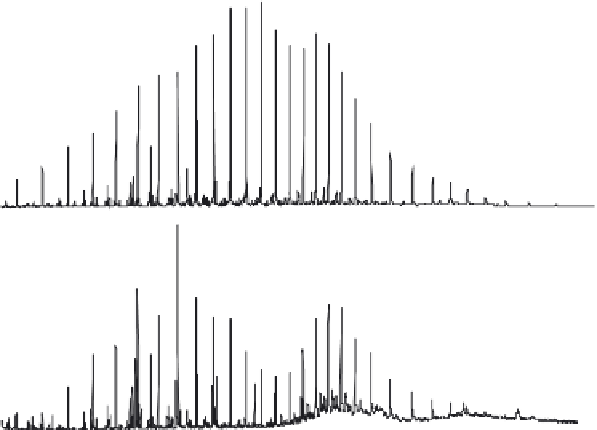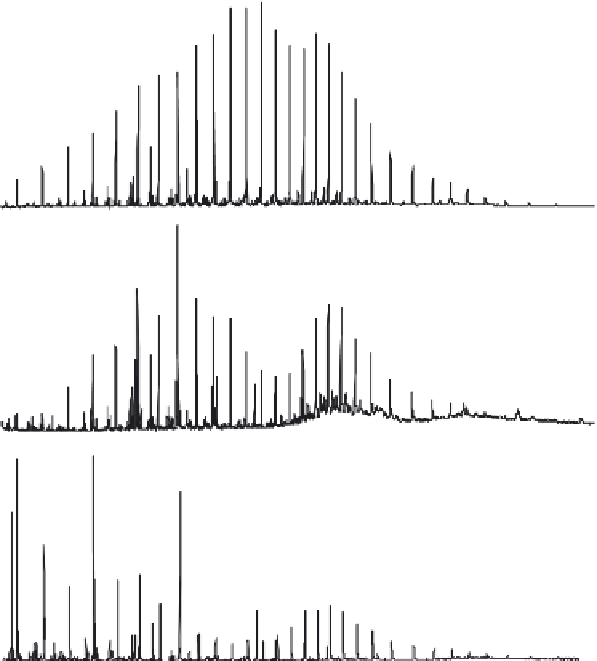Geology Reference
In-Depth Information
Pr
Isoprenoid
hydrocarbons
Normal
alkanes
A
Vestigial plant waxes
some odd-
carbon preference
Q
High volatile
bituminous coal
Ph
Homologous
normal alkanes
B
Little odd-
carbon preference
Coal distillate
generation
temperature
1000 °c
Product
division
~
n
-C
22
to
n
-C
23
C
Distillate range
alkanes
Residual range
alkanes
Coal tar
generation
temperature
500 °c
Cracked
alkanes?
D
Distillate range
alkanes
Residual range
alkanes
Coal tar
generation
temperature
1000 °c
Trace
hydrocarbons
E
Pronounced even-
carbon preference
Coke
generation
temperature
1000 °c
Retention Time
Figure 11.4.6. Saturated hydrocarbon fingerprints (GC/MS
85) of high-volatile bituminous coal under various
states of thermal exposure: (A) the high-volatile bituminous coal contains a homologous series of normal alkanes
eluting between
m
/
z
-C
39+
. The late eluting normal alkanes exhibited a subtle odd-carbon preference
indicative of geologically reformed plant waxes. The ratio of Pr/Ph exceeded 3, (B) coal distillates formed at
500°C (not shown) and 1000°C, respectively, contain nearly identical mixtures of
n
-C
8
and
n
-C
39+
with no odd-
carbon preference, (C) coal tar generated at 500°C contains a trough in the normal alkane series between
n
-C
8
and
n
n
-C
22
or
n
-C
23
that separates distillate range and residual range normal alkanes, (D) coal tar generated at 1000°C contains
multiple troughs or inflection points in the normal alkane profile demarking light alkanes, distillate range alkanes,
and residual range alkanes, and (E) coke formed at 1000°C contained
n
-C
9
to
n
-C
18
that coeluted with other
complex hydrocarbons plus heavy even alkanes eluting between
n
-C
18
and
n
-C
38
.






























































